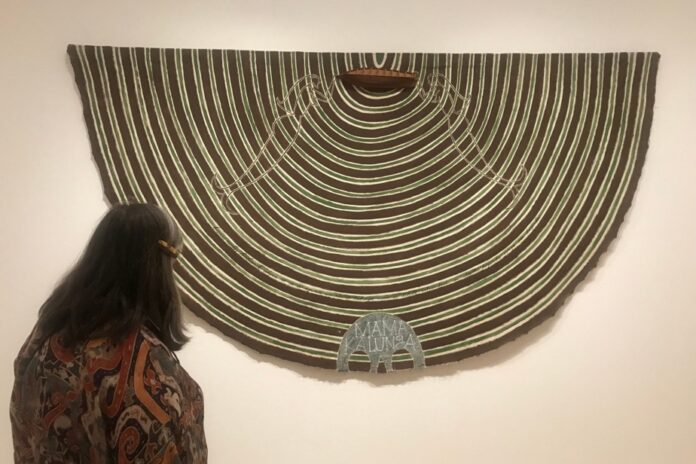(New York) In New York, the Museum of Modern Art (MoMA) offers a new reading of the colonial past of Latin America through the eyes of contemporary artists.
A total of 65 works by 40 artists of different generations and styles reinterpret the history of the region told by cartographers, missionaries, scientists and adventurers.
Through painting, photography, sculpture or video, the Chosen Memories exhibition, until September 9, is part of the collection of Venezuelan Patricia Phelps de Cisneros who donated it to the New York Museum.
Articulated around three themes, the artists offer new “readings of the story” of European colonialism in Latin America and the revitalization of its cultural heritage, according to MoMA.
Thus with Looting, the Guatemalan Regina José Galindo created a work with the gold encrustations that a dentist placed in his molars and which, after extracting them again, remained like “imprints of his mouth that function as small sculptures from an imaginary archaeological museum”, in a metaphor for the violence of raw material extraction economies.
Terra Nova, the name of a map published in Europe in 1541, is the basis for the Dominican Firelei Báez to paint a ciguapa, a mythological female creature from her country, voluptuous and elusive which, juxtaposed with the diagram of the map, “embodies the fears and desires of European conquerors” to unknown cultures.
Argentinian Leandro Katz used early lithographs made in the 1830s by explorers John Lloyd Stephens and Frederick Catherwood, who studied the Maya region that now occupies southern Mexico, Guatemala and Honduras, to reconstruct their shipments.
Under the artistic name “Las Yeguas del Apocalipsis”, the Chileans Pedro Mardones Lemebel, a writer, and the poet Francisco Casas present their version of Las dos Fridas in an impressive photograph, alluding to the Mexican painter Frida Kahlo (1907-1954) .
The artists delved “into the past in order to repair histories of dispossession, reconnect with undervalued cultural legacies, and strengthen ties of kinship and belonging,” the Latin art curator summarized in a statement. -American of the museum, Argentina Inés Katzenstein.
“For example,” she added to AFP, “the works offer a critical look at European colonialism.”
For Brazilian photographer Rosangela Rennó, quoted by MoMA, “History is a living organism […] constantly re-read and re-evaluated”.
For the organizers of Chosen Memories, colonial structures continue to condition value systems around ancestral cultures, work and nature.
For the “past is never quite past” and “is a fertile field of possibilities for the present.”
Some of what is on display at MoMA comes from the collection of Ms. Phelps de Cisneros who donated 250 works to the museum for 25 years. In 2016, this Venezuelan, one of the greatest private collectors in the world, created an eponymous research institute dedicated to Latin American art.
The MoMa has over 5,000 works of modern and contemporary art from this region.





